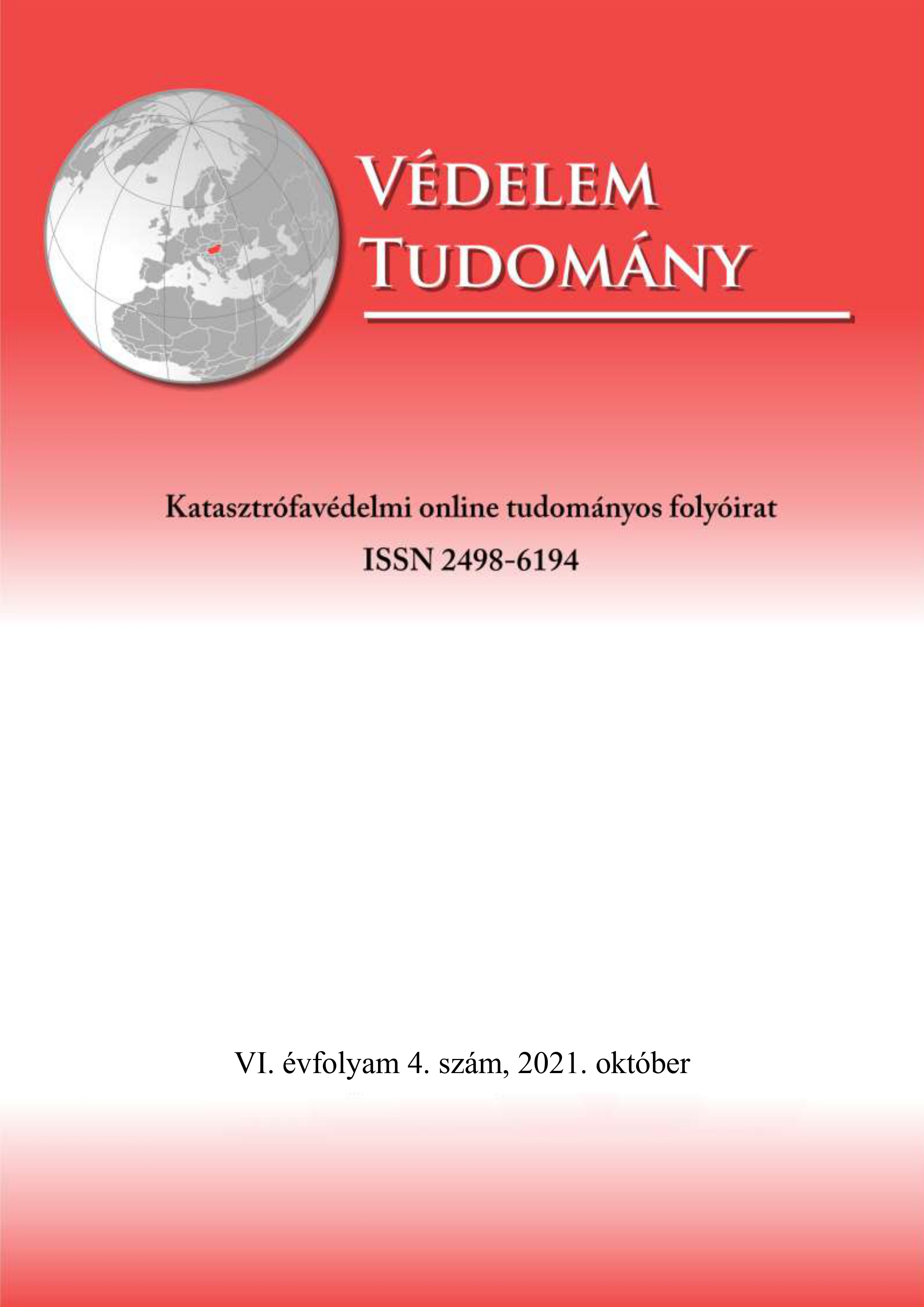Application of dose constraint in Hungary
Abstract
The purpose of radiation protection is to protect against ionizing electromagnetic and charged particle radiation. The main goal is to eliminate deterministic effects and to ensure that stochastic effects do not exceed the socially accepted risks of other occupations. In this article, I will briefly present the 3 principles of radiation protection, justification, optimisation, and limitation. After a brief overview, I will show with the principle of limitation in more detail. I am presenting recommendations and regulations for dose limits and dose constraints, with a little historical review. We can track how the radiation protection recommendations have evolved with the changing of the recommendations.
References
Act CXVI of 1996 on Atomic Energy (downloaded: 12.01.2021.) [2] Ministerial Decree 16/2000 (VI. 8.) of the Minister of Health on the Implementation of Certain Provisions of the Act CXVI of 1996 on Atomic Energy (downloaded: 12.01.2021.)
Govt. decree 487/2015. (XII. 30.) on the protection against ionizing radiation and the corresponding licensing, reporting (notification) and inspection system (downloaded: 12.01.2021.)
László Manga, Lajos Kátai-Urbán. Nukleáris balesetekből levonható tanulságok – a tudomány állása. I. rész. (2016) Bolyai Szemle. XXV. 4. pp. 120-136
ICRP Publication 26. Recommendations of the International Commission on Radiological Protection. (January 17, 1977) PERGAMON PRESS URL: https://journals.sagepub.com/doi/pdf/10.1177/ANIB_1_3 (downloaded: 20.01.2021.)
ICRP Publication 103. The 2007 Recommendations of the International Commission on Radiological Protection. Editor J. VALENTIN. (March 2007) Elsevier. URL: https://journals.sagepub.com/doi/pdf/10.1177/ANIB_37_2-4 (downloaded: 20.01.2021.)
ICRP Publication 60. 1990 Recommendations of the International Commission on Radiological Protection. (1991) Pergamen press. URL: https://journals.sagepub.com/doi/pdf/10.1177/ANIB_21_1-3 (downloaded: 20.01.2021.)
Sándor Deme, István Fehér (Editors). Sugárvédelem. Budapest: ELTE Eötvös Kiadó
Kft., 2010. ISBN 978-963-284-080-2
József Varga. Orvosi-biológiai izotóplaboratóriumok sugárvédelme. Debreceni Egyetem (2011)
Wagner de Souza, Alphonse GAC Kelecom. The State of the Art about the Recommendations of the International Commission on Radiological Protection on the Radiation Protection System. Conference Paper. (October 2011) 2011 International Nuclear Atlantic Conference -INAC 2011 Belo Horizonte, MG, Brazil, October 24-28, 2011. ISBN: 978-85-99141-04-5 (downloaded: 20.01.2021.)
European Commission, Food and Agriculture Organization of the United Nations, International Atomic Energy Agency, International Labour Organization, OECD Nuclear Energy Agency, Pan American Health Organization, United Nations Environment Programme, World Health Organization, Radiation Protection and Safety of Radiation Sources: International Basic Safety Standards, IAEA Safety Standards Series No. GSR Part 3, IAEA,
Vienna (2014) URL: https://www-pub.iaea.org/MTCD/publications/PDF/Pub1578_web-57265295.pdf
(downloaded: 20.01.2021.)
COUNCIL DIRECTIVE 2013/59/EURATOM laying down basic safety standards for protection against the dangers arising from exposure to ionizing radiation, and repealing Directives 89/618/Euratom, 90/641/Euratom, 96/29/Euratom, 97/43/Euratom and 2003/122/Euratom URL: https://eur-lex.europa.eu/eli/dir/2013/59/oj (downloaded: 20.01.2021.)
Govt. Decree 118/2011. (VII. 11.) Korm. on the nuclear safety requirements of nuclear facilities and on related regulatory activities
Govt. Decree 155/2014. (VI.30.) on the safety requirements for facilities ensuring interim storage or final disposal of radioactive wastes and the corresponding authority activities
Zsolt Sebestyén, Balázs Laczkó, Nándor Ötvös, Gábor Petőfi, Péter Tomka. Modernization of radiation protection requirements relating nuclear facilities. Sugárvédelem,X. 1. (2017) pp. 1-43.
Hungarian Atomic Energy Authority: Guidline. AKFN4.23. Content of the Workplace Radiation Protection Rules for nuclear installations. Budapest (2020)URL:
http://www.oah.hu/web/v3/OAHPortal.nsf/ACA1C323EB58E62DC1257BE9002CD900/$Fil
e/AKFN%204_23_vegleges.pdf (downloaded: 20.01.2021.)
Home page of Public Limited Company for Radioactive Waste Management URL: https://rhk.hu/sugarvedelem
László Juhász, Andor Kerekes, Miklós Ördögh, László Sági, Gábor Volent, Sándor Pellet. DÓZISMEGSZORÍTÁS ALKALMAZÁSA. XXXVI. Sugárvédelmi Továbbképző Tanfolyam. Hajdúszoboszló. 2011. május 3-5.
URL: https://www.elftsv.hu/svonline/docs/kulonsz/2011sv/szekcio1/dozismegszoritas.pdf
(downloaded: 20.01.2021.)
Zoltán Antal, Lajos Kátai-Urbán, Gyula Vass. Atomerőmű generációk fejlődésének vonzatai HADMÉRNÖK. XIII. 3. (2018) pp. 150-163.
Zoltán Antal, Lajos Kátai-Urbán, Gyula Vass. Nukleáris biztonsági irányelvek magyarországi megvalósulása. VÉDELEM TUDOMÁNY: KATASZTRÓFAVÉDELMI ONLINE TUDOMÁNYOS FOLYÓIRAT. IV 2 (2019) pp. 122-145.
Zoltán Antal, Gyula Vass, Lajos Kátai-Urbán. Atomerőművek létesítést megelőző alapvető szabályozóinak és tervezési kritériumainak vizsgálata. BOLYAI SZEMLE XXVI.(1) (2017) pp. 126-139.




